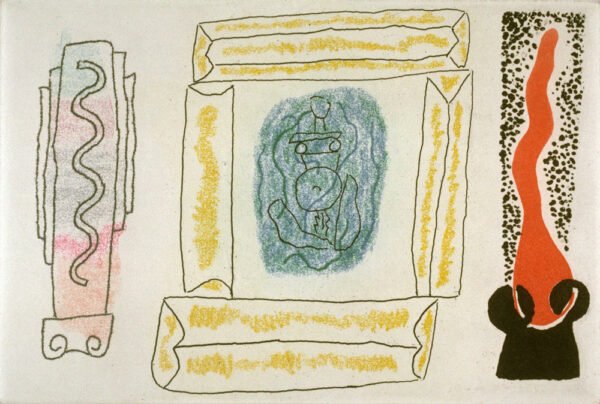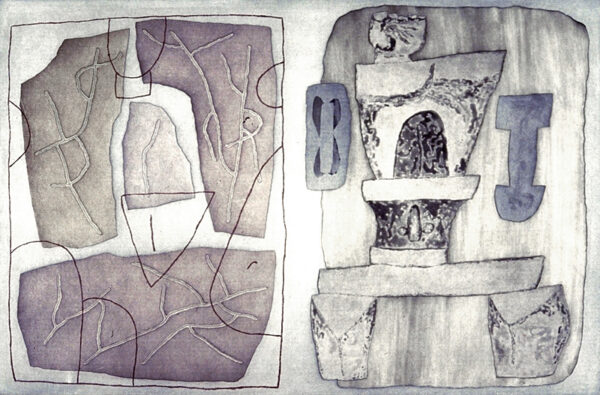
Hard ground etching with soap ground aquatint and aquatint.
6 x 4"; 14¾ x 12". 15.
Crown Point Press and Pamela Paulson.
$850 InquireInquire

Color hard ground and soft ground etching with soap ground aquatint.
4 x 6"; 12 x 15". 15.
Crown Point Press and Pamela Paulson.
$1,500 fair market value Unavailable

Color soft ground etching with soap ground and spit bite aquatints.
4 x 6"; 12 x 15". 15.
Crown Point Press and Pamela Paulson.
$1,500 fair market value Proof AvailableProof Available

Soap ground aquatint with aquatint.
23¾ x 17¾"; 38 x 30". 15.
Crown Point Press and Pamela Paulson.
$2,000 InquireInquire

Color soap ground and spit bite aquatints.
23¾ x 17¾"; 38 x 30". 15.
Crown Point Press and Pamela Paulson.
$2,000 fair market value Unavailable

Soup ground and spit bite aquatints.
11½ x 10¾"; 20½ x 19". 15.
Crown Point Press and Pamela Paulson.
$1,800 InquireInquire

Color soap ground and spit bite aquatints.
11½ x 10¾"; 20½ x 19". 15.
Crown Point Press and Pamela Paulson.
$1,800 fair market value Unavailable

Color woodcut.
36 x 23¾"; 41 x 28". 100.
Crown Point Press and Tadashi Toda.
$3,500 InquireInquire

Color aquatint with soft ground and hard ground etching, spit bite aquatint and engraving.
4 x 6"; 12 x 15". 25.
Crown Point Press and Hidekatsu Takada.
$950 fair market value Unavailable

Color aquatint with soft ground and hard ground etching, spit bite aquatint and engraving.
4 x 6"; 12 x 15". 25.
Crown Point Press and Hidekatsu Takada.
$950 fair market value Unavailable

Color aquatint with soft ground and hard ground etching and spit bite aquatint.
4 x 6"; 12 x 15". 25.
Crown Point Press and Hidekatsu Takada.
$950 fair market value Unavailable

Color soft ground etching with aquatint.
6 x 8"; 16 x 16". 25.
Crown Point Press and Hidekatsu Takada.
$1,500 fair market value Proof AvailableProof Available

Color aquatint with hard and soft ground etching and spit bite aquatint.
24 x 36"; 29¾ x 44". 25.
Crown Point Press and Hidekatsu Takada.
$4,000 fair market value Unavailable

Color aquatint with soft ground etching and spit bite aquatint.
24 x 36"; 30¾ x 44". 25.
Crown Point Press and Hidekatsu Takada.
$4,000 InquireInquire